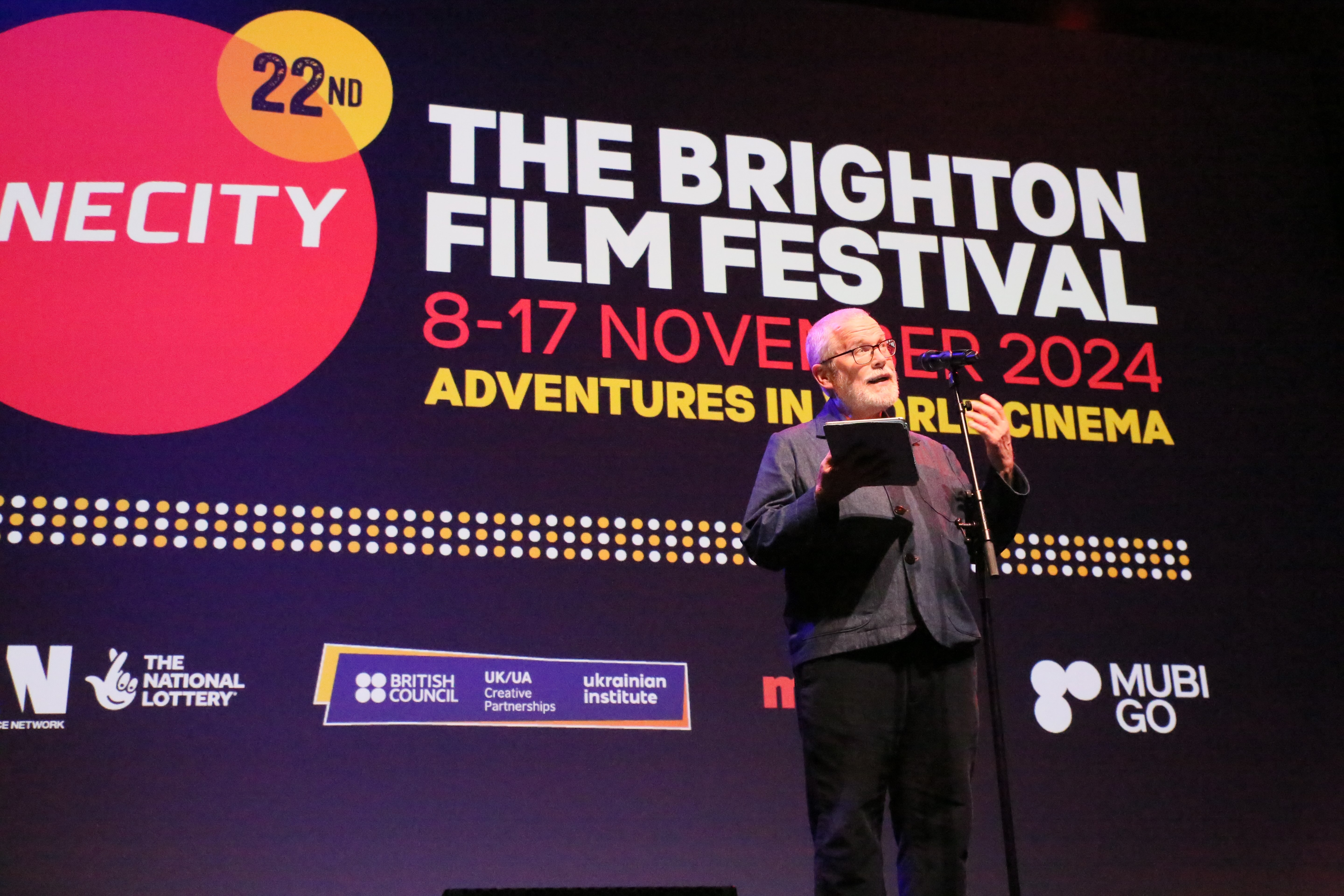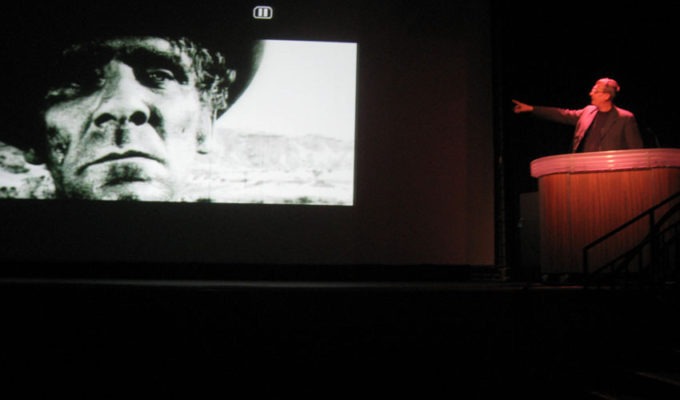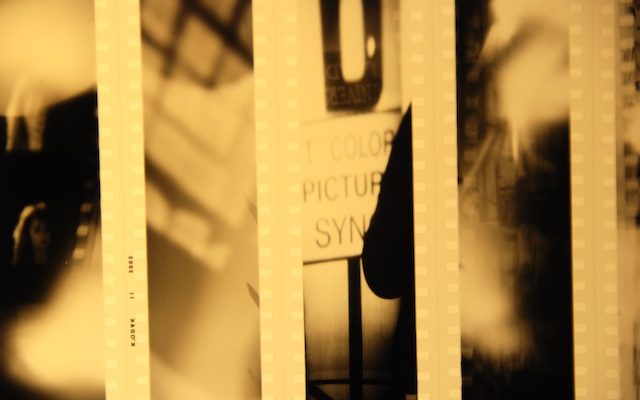24 X A Second: The Austrian Avant-Garde (2007)
This special CINECITY programme was devoted to the work of Austrian film-makers Peter Tscherkassky, Gustav Deutsch, Martin Arnold and the Viennese distributors sixpackfilm.
The essential qualities of cinema – light, movement, space, time – have been rigorously explored by Austrian avant-garde cinema. These film-makers have engaged with the materiality of film to create a cinema of purity and intensity. Individually and collectively, they have a remarkable and distinguished place within the international history of artists’ films.
In addition to a comprehensive screening programme on 35mm, Peter Tscherkassky and Gustav Deutsch presented masterclasses and Dietmar Schwärzler of sixpackfilm presented work by Peter Kubelka, Kurt Kren, Valie Export, and Mara Mattuschka. Venues included the Duke of York’s Picturehouse and Sallis Benney Theatre.
Running throughout November 2007 at the University of Brighton, CINECITY also presented Frame by Frame – an installation by Peter Tscherkassky consisting of lightboxes with filmstrips and plasma screens. Tscherkassky showed two versions of his CinemaScope Trilogy: as stream of moving images, and as a montage of filmstrips. Eschewing the traditional use of the film camera, his elegantly conceived and brilliantly constructed films are made by using contact printing and variable exposure to transfer found film onto unexposed film stock. He then manipulates and processes the film to create the finished works. This project was originally initiated by the festival of Vila do Conde.
Screenings
Friday 23 November, 2007
Programme 1 – Martin Arnold
By working with extreme slow motion, Arnold transforms the insignificant into remarkable experimental works. This presentation of his works included Passage A L’acte (1993) and Alone: Life Wastes Andy Hardy (1998); and Deanimated (2002).
Saturday 24 November, 2007
Programme 2 – sixpackfilm
Founded in 1990, sixpackfilm distributes and promotes Austrian film and video art. Dietmar Schwärzler of sixpackfilm presented work by Peter Kubelka, Kurt Kren, Valie Export, and Mara Mattuschka.
Programme 3 FILM IST. (7-12)
Gustav Deutsch, Austria 2002. 93 mins.
Since 1996 Gustav Deutsch has been scouring film archives, retrieving fragments of film, including damaged ends of reel, test shots and discarded editings, and adding them to an ongoing project entitled FILM IST. These found clips, freed from their original context, develop new meanings and become part of new narratives. They also invite us, as viewers, to play an active part in this creation of new meanings. FILM IST. 7-12 is the second in Deutsch’s series of ‘tableau films’.
Programme 4 – Gustav Deutsch masterclass
Film Ist.: finding and searching
Gustav Deutsch presented a range of found films that each with a specific historical context including: a Hindi film footage found in the streets of Casablanca, a burning skyscraper by a Croatian cinema owner that survived both World Wars in an Austrian cellar and a working copy of a Brazilian tele-novella containing two frames from every scene that was used to determine exposure times.
Sunday 25 November 2007
Programme 5 – WORLD MIRROR CINEMA (WELT SPIEGEL KINO)
Gustav Deutsch 2005, 90 mins.
In this found footage collage, Deutsch combines three 30-minute-long films from Vienna (Kinematograf Theater Erdberg, Vienna 1912), Indonesia (Apollo Theater, Surabaya 1929) and Porto (Cinema São Mamede Infesta, Porto 1930).
+ short TRADITION IS THE HANDING ON OF FIRE, NOT THE WORSHIP OF ASHES 1 min, 1999.
(Tradition ist die Weitergabe des Feuers und nicht die Anbetung der Asche)
An elegy to nirate film with a soundtrack from Christian Fennesz.
Programme 6 – Peter Tscherkassky: masterclass
Peter Tscherkassky is a curator, teacher, critic, historian and a founding member of Vienna’s renowned sixpackfilm distribution initiative. His spectacular projects, such as his CINEMASCOPE TRILOGY, explore the limits and artifice of film.
Instructions for a Light and Sound Machine Austria 2005, B+W 35mm 1:2:35 17mins
Using montage and printer techniques, this film processes images from Sergio Leone’s The Good, The Bad and The Ugly. Stripped of original colour, form and meaning, Tscherkassky describes the work as, “an attempt to transform a Roman western into a Greek tragedy.”
Cinemascope Trilogy: L’Arrivee (1998) Outer Space (1999) and Dreamwork (2002)
L’Arrivee is constructed as a multi-layered study on the meaning of ‘arrival’. In Outer Space, Tscherkassky transforms excerpts from Sidney J. Furie’s horror film, The Entity (1988) starring Barbara Hershey, into a storm of gasps, crackles, flashes, and trembling clouds as an increasingly haunted portrait of human desolation and the descent into madness. Dreamwork is a homage to Man Ray and at the same time it’s dedicated to the beginning of the European avant-garde film within the surrealist movement. This film has a sensuous texture through its repeated loops that depict personal grooming, the massaging of limbs, involuntary spasms and the stuttering of the physical film itself.
Throughout CINECITY 15 Nov – 2 Dec 2007
Frame by Frame – Installation by Peter Tscherkassky, Austria, 2006
An installation by Peter Tscherkassky consisting of lightboxes with filmstrips and plasma screens. Tscherkassky shows two versions of his CinemaScope Trilogy: as stream of moving images, and as a montage of filmstrips.
Tscherkassky spends months in order to create his films frame by frame. Eschewing the traditional use of the film camera, his elegantly conceived and brilliantly constructed films are made by using contact printing and variable exposure to transfer found film onto unexposed film stock. He then manipulates and processes the film to create the finished works.
This project was originally initiated by the festival of Vila do Conde. Courtesy: the artist and Solar gallery, Vila do Conde.


